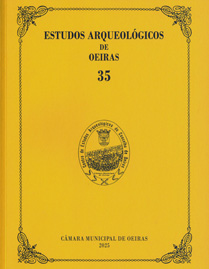Novos dados sobre a proveniência do cobre de Leceia
DOI: 10.5281/zenodo.15005637
Palavras-chave:
Pb isotopes, copper sources, Chalcolithic, Lisbon peninsula, Long distance tradeResumo
The archaeological site of Leceia is a Chalcolithic settlement with one of the largest amounts of metal artefacts in the Lisbon peninsula, although the absence of ores and smelting remains suggests that local metallurgical operations were essentially related to the last stages of the chaine opératoire, namely the casting and forging of artefacts. In fact, the local archaeological record shows several ingots including axe‑ingots, some of which bear clear traces of sectioning. Five of these ingots were analysed to establish their elemental compositions and Pb isotope signatures in order to identify the possible sources of copper used in their manufacture. Elemental results identified copper with variable contents of arsenic (up to 2.94 wt%) and very low amounts of other impurities, which compares well with the composition of local objects. Pb isotope ratios are also in line with the values previously obtained for copper prills and objects from Leceia, supporting the likely use of these ingots for the casting of local artefacts. Moreover, the most likely candidates for supplying the metal based on in the ingots analysed are copper deposits located in the Linares‑La Carolina mine district and also, but to a lesser extent, in mines located in the Los Pedroches Batholith and the South Portuguese Zone. This evidences a long‑distance copper trade between the Portuguese Estremadura and the Southern Iberian Peninsula and implies multiple trade connections of Chalcolithic communities inhabiting this region.
Downloads
Publicado
Como Citar
Edição
Secção
Licença
Os artigos publicados são da exclusiva responsabilidade dos Autores.
É expressamente proibida a reprodução de quaisquer imagens sobre as quais
existam direitos de autor sem o prévio consentimento dos signatários dos artigos
respectivos.




